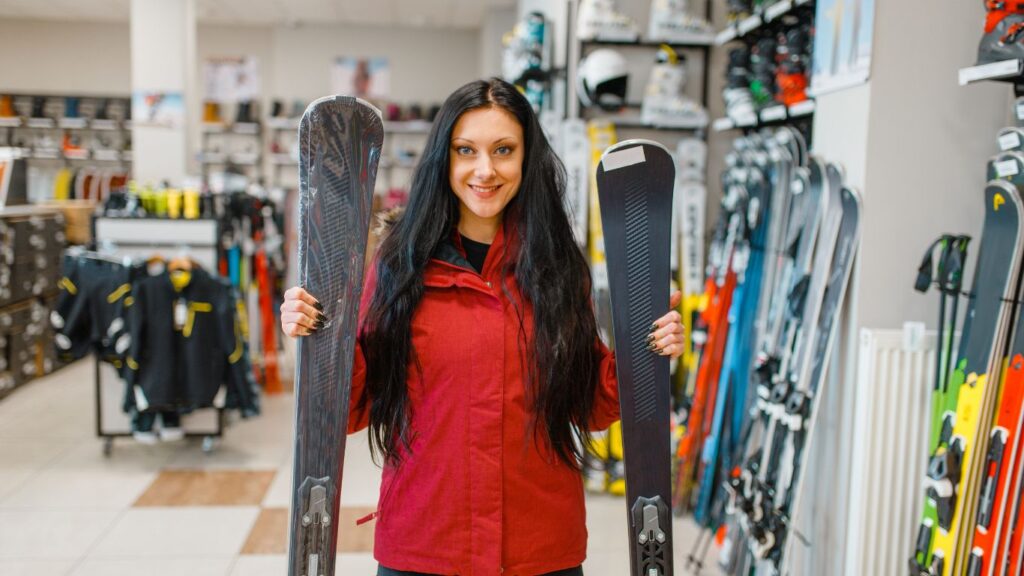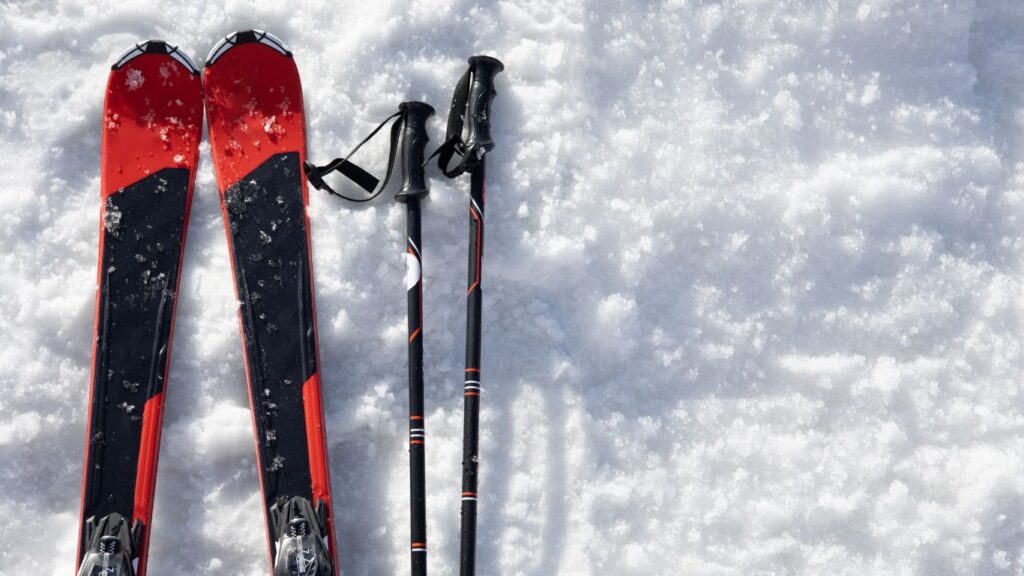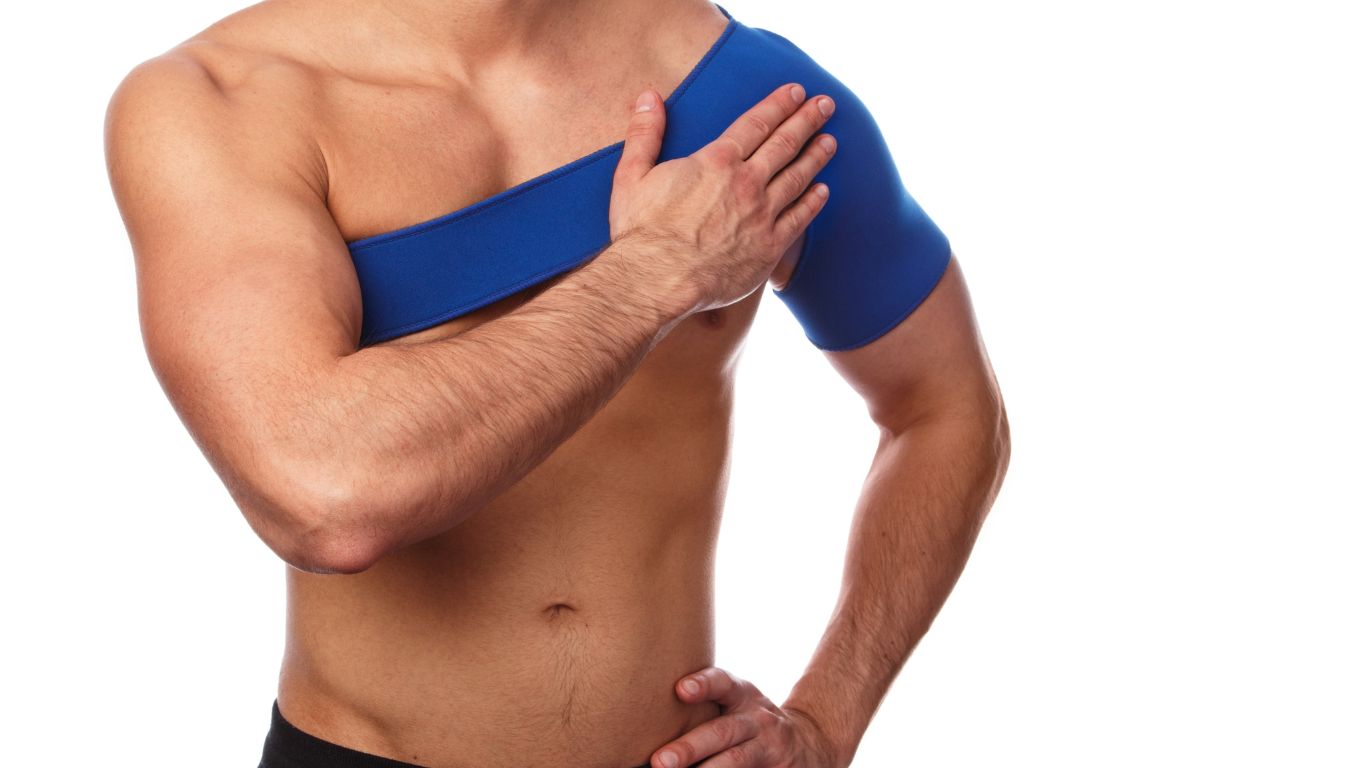Choosing the Right Skis for Your Adventure
Selecting the perfect ski size can improve your performance and enjoyment on the slopes. Whether you’re gliding down a groomed run or carving through fresh powder, having skis complementing your height, weight, and skill level is essential. Here’s how to find the right fit, featuring an all-mountain ski recommendation for our intermediate-level skier.

Determining Ski Size for an Intermediate Skier
Skier’s Profile:
- Height: 5 feet 10 inches
- Weight: 175 pounds
- Skill Level: Intermediate
- Skiing Type: All-mountain
Ski Size Recommendation:
Based on the skier’s information provided and the intended use for all-mountain versatility, we recommend 177-184 cm skis.
How We Calculate Ski Size:
Utilizing the ski size formula provided, we convert the height to centimetres and subtract 5 cm for an all-mountain ski, which yields a ski length recommendation.
For our skier:
`5 feet 10 inches (70 inches) * 2.54 = 177.8 cm (approximate skier height in cm) – 5 = 172.8 cm (approximate ski size)`
However, considering the skier’s intermediate skill level and the all-mountain skiing style, which often warrants a slightly longer ski for versatile terrain, we round up within the recommended range of 177-184 cm.
Ski Size Chart (Intermediate, All-Mountain)
| Skier Height (ft/in) | Skier Height (cm) | Recommended Ski Length (cm) |
| 5’10” | 178 | 177 – 184 |
| 5’11” | 180 | 177-184 |
| 6’0″ | 183 | 177-184 |
| 6’1″ | 185 | 182-189 |
Other Factors to Consider When Choosing Ski Size
Aside from height, weight, and skill level, other factors can also affect the recommended ski size for an individual. These include:
- Ski Type: A powder ski may be longer than an all-mountain ski due to its more comprehensive design and intended use in deeper snow.
- Terrain Preference: Skiers who prefer groomed runs may opt for shorter skis, while those who enjoy off-piste or back country skiing

How to Wax Skis?
Waxing your skis is a crucial step in ski maintenance that enhances performance and protects your skis over time. Here’s a straightforward guide to help you wax your skis like a pro:
- Clean Your Skis: Start with a clean base by removing old wax and dirt. Use a ski base cleaner and a cloth to clean the surface thoroughly.
- Secure Your Skis: Place your skis base-up in a ski vice. This keeps them stable and makes it easier to apply the wax.
- Choose the Right Wax: Select a wax that matches the current snow conditions. There are different types of wax for varying temperatures and snow types.
- Heat the Wax: Hold a chunk of wax against a waxing iron set to the wax’s specified temperature. Allow the wax to drip evenly across the ski base.
- Spread the Wax: Using the waxing iron gently spread the melted wax over the entire base of the ski. Be sure to move the iron continuously to prevent overheating any ski base area.
- Let It Cool: Allow your skis to cool for at least 30 minutes after waxing. The wax needs to harden to adhere to the base properly.
- Scrape Off Excess Wax: Remove excess wax from the ski base using a plastic scraper. Hold the scraper at a 45-degree angle and push down the length of the ski.
- Brush the Base: Finish by brushing the base with a nylon brush to structure the surface. Brush from tip to tail to help improve glide.
Regular waxing is vital for keeping your skis in top condition and achieving the best performance on the slopes.
How Much Are Jet Skis?
When considering the purchase of a jet ski, one of the primary concerns is often the cost. The price of jet skis can vary widely based on brand, model, features, and the year of manufacture. On the entry-level end, prices for a new jet ski start around $5,000 for basic models without many added features. Mid-range models, which balance performance and cost, can range from $10,000 to $15,000. For those seeking premium performance and luxury features, high-end models can cost upwards of $20,000. It’s also important to consider additional costs such as maintenance, fuel, insurance, and storage, as these can significantly impact the overall investment. Whether you’re a recreational rider or an adrenaline junkie seeking the latest in jet ski technology, there’s a wide range of options to fit various budgets and lifestyles.
How Long Should My Skis Be?
The length of your skis is critical in determining your control, stability, and manoeuvrability on the slope. Generally, your skis should be chosen based on height, weight, skill level, and preferred terrain. For beginners, skis should typically reach somewhere between your chin and nose when standing upright, as shorter skis are more accessible to turn and manage. Intermediate skiers might opt for skis about nose-to-forehead height for a good balance between control and speed. Advanced skiers or those who prefer speed and aggressive skiing on varied terrain may choose skis that extend above their head. However, it’s important to remember that these are guidelines rather than strict rules. Factors like personal preference, skiing style, and specific ski types (such as powder skis vs. race skis) can also influence the ideal ski length for an individual.
How Much Do Skis Cost?
The cost of skis can range significantly based on factors such as brand, quality, type, and where they are purchased. For amateurs or those new to skiing, entry-level skis can be found from approximately $300 to $600. These skis are generally more forgiving and designed to help new skiers develop their skills. Intermediate skiers looking to upgrade can expect to find skis in the $600 to $1,000 range, offering a good balance between performance and comfort.
Advanced skiers seeking specialized skis for activities like racing or off-piste skiing may find prices ranging from $1,000 to $1,500 or more. These skis are engineered with high-quality materials and designed to deliver peak performance under specific conditions.
It’s also worth noting that the above prices typically reflect the cost of the skis alone. Additional necessary equipment, including bindings, boots, and poles, can significantly increase the overall investment in skiing gear. Skiers should also consider the potential need for seasonal maintenance, including waxing and edge tuning, which can affect long-term costs.

FAQs
Q: Can beginners use skis in the 177-184 cm range?
A: Beginners typically benefit from shorter skis, offering easier control and manoeuvrability. While a beginner could use skis within the 177-184 cm range, a shorter ski might provide a better learning experience.
Q: How does weight impact the recommended ski size?
A: Weight is a crucial factor in determining ski size. Heavier skiers might require longer skis for better support and stability, while lighter skiers could opt for shorter skis for easier handling.
Q: Are there skis specifically designed for women?
A: Yes, many brands design skis with women in mind, focusing on lighter-weight materials and tailored flex patterns that suit the average female skier’s physique and skiing style.
Q: How often should I replace my skis?
A: This depends on how frequently you ski and the conditions you typically face. A general guideline is after approximately 100 to 120 days of skiing, but it’s essential to regularly assess your skis’ condition.
Q: Can I use all-mountain skis in a park or for freestyle skiing?
A: While all-mountain skis are designed for versatility, those looking to specialize in park or freestyle skiing might prefer skis specifically designed for those purposes, offering features like twin tips for easier landings and tricks.
Final Thoughts
The above recommendation is a guideline to start with when selecting skis. It’s important to consider that individual preferences, ski model differences, and terrain can influence the ideal ski length. If you’re between sizes, remember that shorter skis are more accessible to turn and manage, while longer skis provide better stability at higher speeds.
Trying out different ski lengths before purchasing is the best approach for any skier, particularly at an intermediate level. Many ski shops offer demos, allowing you to find what feels right underfoot.
We hope this information has been helpful and that you find the perfect skis for your mountain adventures! Remember, the right gear can make all the difference on the slopes. Happy skiing!









